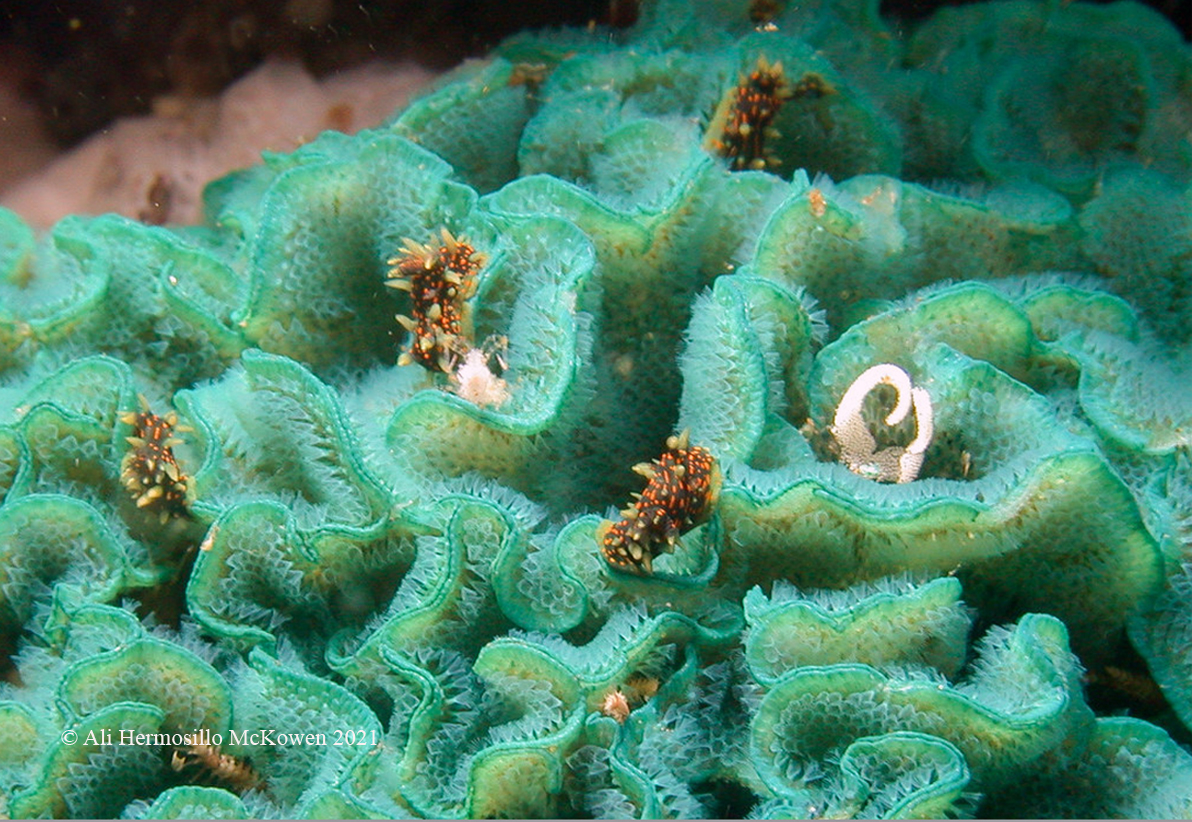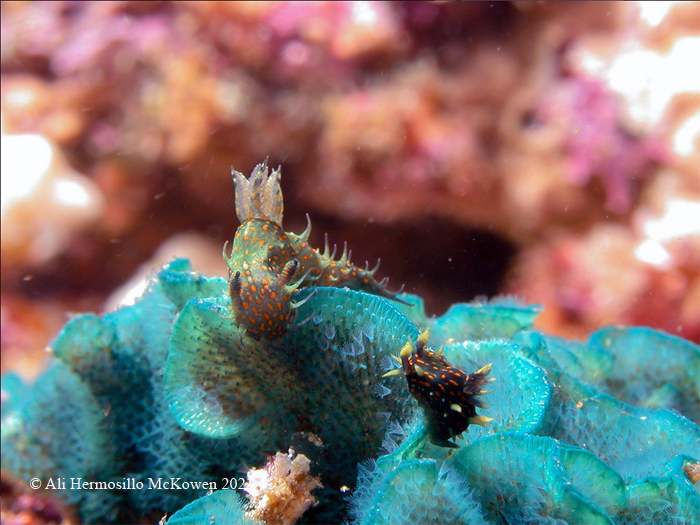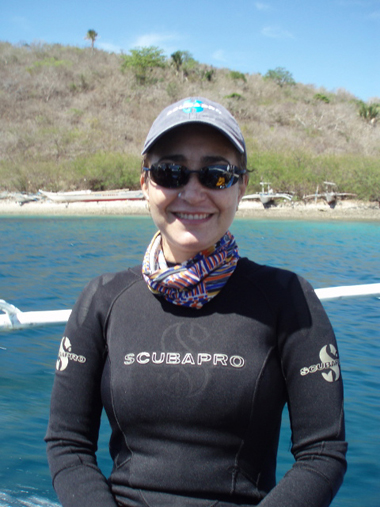 |
Polycera cf. anae
Image courtesy of Ali Hermosillo McKowenDive Site Chimo, Puerto Vallarta, Mexico
Polycera cf. anae (darker animal on lower right)
meets Polycera cf. alabe (large green critter to upper left)
Chimo, Puerto Vallarta, Mexico
 |
Polycera cf. anae Pola, Sanchez-Benitez & Ramiro, 2014 A few of you are aware that a couple of us are attempting to revise "Eastern Pacific Nudibranchs." This project has become a real nightmare. So many names have changed and so many new species discovered along our coastline in the seventeen years since the book was written that trying to keep up has posed some real problems. Since we began the project, we thought the species shown here in Ali's photo was Polycera anae Pola, Sanchez-Benitez & Ramiro, 2014. Polycera anae is described as - body is black and densely covered with irregular orange dashes. There are a few translucent white to light green spiky papillae, the same color as the rhinophores, tips of the gill plumes, extra-branchial appendages and velar processes. Of particular note is its size, being tiny, only to 5mm. Note how small these individuals are compared to the bryozoan polyps they are feed on. Well, Ali's critters sure match this description although her photo was taken in Puerto Vallarta, Mexico, farther north than this species has been previously documented. So now we are not sure and are awaiting more info about this species. If anyone has seen this tiny guy, we'd love to hear from you. For now, I think we will refer to it with a "cf." indicating maybe. |
Pola M., Sanchez-Benítez M. & Ramiro B. (2014). The genus Polycera Cuvier, 1817 (Nudibranchia: Polyceridae) in the eastern Pacific Ocean, with redescription of Polycera alabe Collier & Farmer, 1964 and description of a new species. Journal of Molluscan Studies. 80: 551-561.
Sammamish, WA 98074
Dec., 2021
Send Dave email at davidwbehrens@gmail.com
Ali Hermosillo McKowen on location in the Philippines
 |
Ali needs very little in the way of introduction to readers of this site. She has been featured in many of the Branch of the Week (BOW) presentations through the years. Diving with Ali can be infectious assuming you can keep up with her. If you didn't have an appreciation for our friends the sea slugs before diving with her, you will certainly reach quantum levels in that regard as Ali is all consuming in her quest to photograph and document their behavior! In the last few years she even acquired her Doctorate in Opistobrach Studies so her enthusiasm certainly knows no bounds. She has the material for putting together field guides for both the Milne Bay region of PNG and also Anilao in the Batangas area of the Philippines. Let's encourage her when time permits to make that happen! As a side note Ali has posted ID's with her Flicker postings from both areas. The links can be seen in the left frame of the home page for this site. Very worth while to visit for those who are seeking to put names together with images. What more can be said, Ali is the greatest! Send Ali email at aliciahmckowen@gmail.com
Michael Miller |

Attention all you Sluggers, and you know who you are! The NSSI 2nd edition is now available in ebook PDF and book form . The hard back version will become available Nov. 1st. Both will cost $65 (individually). You will need to jump through a few hoops to get the electronic version as pdf distribution is protected by Adobe ID!! Please read the following to enable reading your electronic purchase! This new 2nd Edition is updated and reorganized, including 185 new species. Among other features, the new edition includes additional photographs of species, an identification key, and an up-to-date classification reflecting the latest evolutionary relationships. The Indo-Pacific represents the largest expanse of tropical ocean in the world, stretching from the Indian Ocean coast of southern Africa and the Red Sea to the central Pacific of the Hawaiian Islands, Easter Island and the Marquesas. This region supports the most diverse marine fauna of any place in the world for most groups of marine organisms. The nudibranchs and sea slugs are no exception to this rule; there are about 3,000 described species of these organisms in the world and at least 40% of these have been found exclusively in the Indo-Pacific tropics. This book illustrates 2,138 Indo-Pacific nudibranchs and sea slugs, including many undescribed species.
|

|
